#pépé le moko
Explore tagged Tumblr posts
Text

You create intricate rituals just to touch a man’s body. Like shooting him from the back and holding him close as he bleeds out…
I kept associating The Buttertones song with the Casbah (1948) for some reason, so I had to draw my fav scene from the movie. Slimane was insane for all that. I also knew I wanted to use similar colors from Matisse’s La Danse… and for the rest it was… uhh… Secret Squirrel and Morocco Mole… Morocco Mole is a Lorre parody after all, so it works. I also wanted to squeeze him in somewhere, but it just didn’t look good, so I'll draw Morocco Mole at a later date I guess.
The colors got away from me with this one. Enjoy the eye strain~
#Casbah#Casbah (1948)#Slimane#Peter Lorre#Pépé Le Moko#Tony Martin#Faustian Fables#Faustian Imagery#Honestly I just wanted to stop working on it#I kept futzing with the colors and even fucked up one of my layers at some point
26 notes
·
View notes
Text

Peter Lorre dans le film "Casbah" remake du film français "Pépé le Moko"
5 notes
·
View notes
Photo

Line Noro and Jean Gabin in Pépé le Moko (Julien Duvivier, 1937)
Cast: Jean Gabin, Gabriel Gabrio, Mireille Balin, Saturnin Fabre, Fernand Charpin, Lucas Gridoux, Gilbert Gil, Marcel Dalio, Gaston Modot, LIne Noro. Screenplay: Henri La Barthe, Julien Duvivier, Jacques Constant, Henri Jeanson. Cinematography: Marc Fossard, Jules Kruger. Production design: Jacques Krauss. Film editing: Marguerite Beaugé. Music: Vincent Scotto, Mohamed Ygerbuchen.
When Walter Wanger decided to remake Pépé le Moko in 1938 as Algiers (John Cromwell), he tried to buy up all the existing copies of the French film and destroy them. Fortunately, he didn't succeed, but it's easy to see why he made the effort: As fine an actor as Charles Boyer was, he could never capture the combination of thuggishness and charm that Jean Gabin displays in the role of Pépé, a thief living in the labyrinth of the Casbah in Algiers. It's one of the definitive film performances, an inspiration for, among many others, Humphrey Bogart's Rick in Casablanca (Michael Curtiz, 1943). The story, based on a novel by Henri La Barthe, who collaborated with Duvivier on the screenplay, is pure romantic hokum, but done with the kind of commitment on the part of everyone involved that raises hokum to the level of art. Gabin makes us believe that Pépé would give up the security of a life where the flics can't touch him, all out of love for the chic Gaby (Mireille Balin), the mistress of a wealthy man vacationing in Algiers. He is also drawn out of his hiding place in the Casbah by a nostalgia for Paris, which Gaby elicits from him in a memorable scene in which they recall the places they once knew. Gabin and Balin are surrounded by a marvelous supporting cast of thieves and spies and informers, including Line Noro as Pépé's Algerian mistress, Inès, and the invaluable Marcel Dalio as L'Arbi.
7 notes
·
View notes
Text

2 notes
·
View notes
Text








Pépé le Moko
1 note
·
View note
Text
Peter Lorre in musical/noir "Casbah" (1948)
"It gave him a new dimension to expand his own acting career."
Peter Lorre as Detective Slimane with Tony Martin as Pépé le Moko (also, wouldn't this be great as a paper doll set?)

Peter looking devilishly divine with that little whippy stick of his that I am 100% normal about...

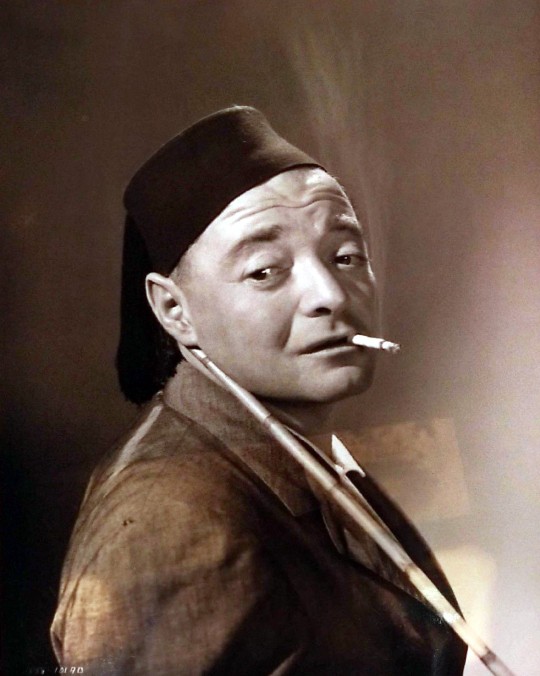
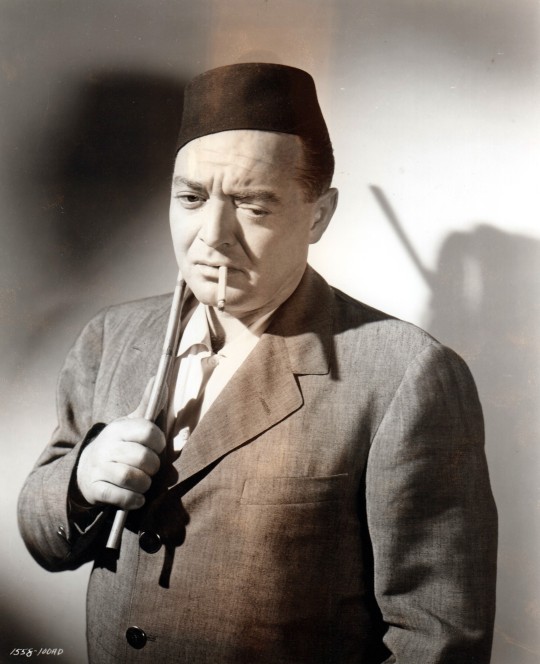
Such a dear face:

LOTS more under the cut!

Believing Lorre a “dyed-in-the-wool good actor,” Tony Martin, who independently produced Casbah with Nat C. Goldstone, gave the actor room to rework his dialogue: “The night before, when he would get the script, he’d say, ‘I’d like to make this or that change.’ And he’d do it.” Director John Berry likewise, in Martin’s words, “let Lorre have the strength” to carry out his own ideas. The actor welcomed the freedom as well as the opportunity to assume a more contemporary role. “I like the role I’m playing now,” [Lorre] told Martin, “because all I’m doing is being a pursuer.” Martin added that the role was also a challenge: “He loved it, being the great actor that he was. It gave him a new dimension to expand his own acting career and to get out of that Sydney Greenstreet thing he was in. . . . It caught him with a sense of humor and a tenderness. - From "The Lost One: A Life of Peter Lorre" by Stephen D. Youngkin
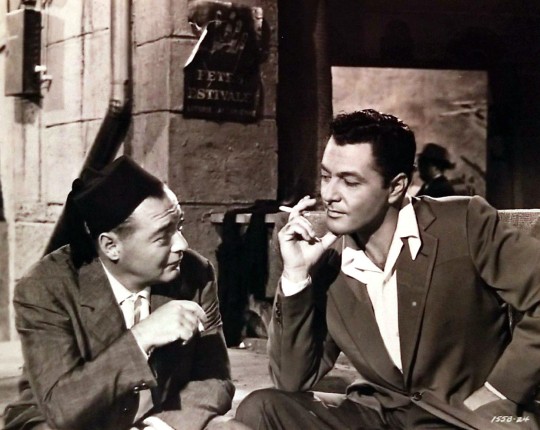


"Singing his way through a string of minor musical-comedies had not prepared Martin for a dramatic debut. He knew he needed help. Lorre cast a spell over the actor and then snapped his fingers: “In those days, the black and white pictures, the close-ups, he could hypnotize you, and he could lull you into a deep inner peace. "We'd do a take and I'd be rotten. He’d say, ‘You know, you’re the worst fucking actor I’ve ever seen.’ I’d say, ‘Really?’ He’d say, ‘Yes, nobody worse.’ And we’d start to laugh and the director would say, ‘Alright, let’s go,’ and I’d do a good scene. He had a way of putting me down. He had a psychological way. And we had dinner every night." - From "The Lost One: A Life of Peter Lorre" by Stephen D. Youngkin
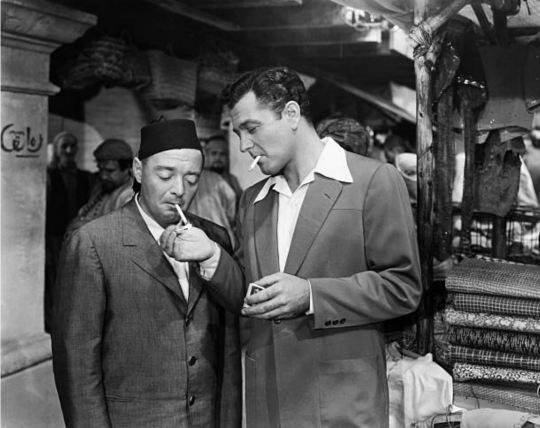
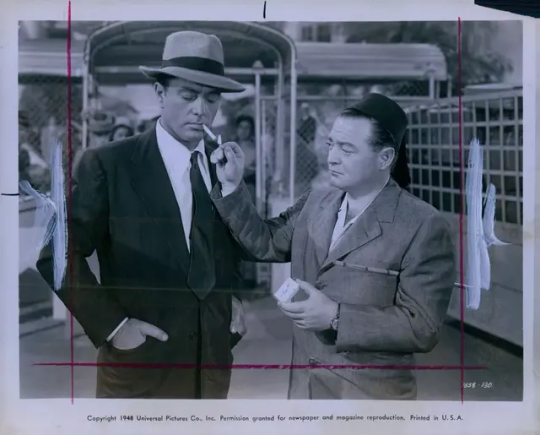
With Thomas Gomez as Louvain:

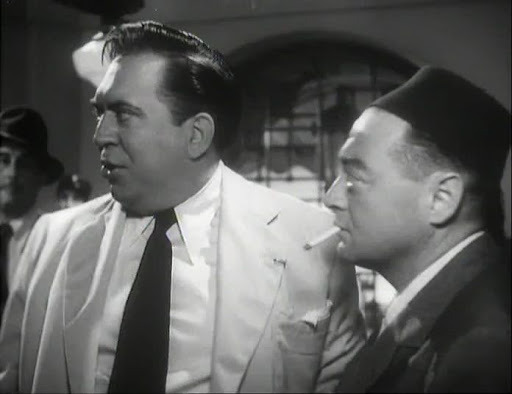

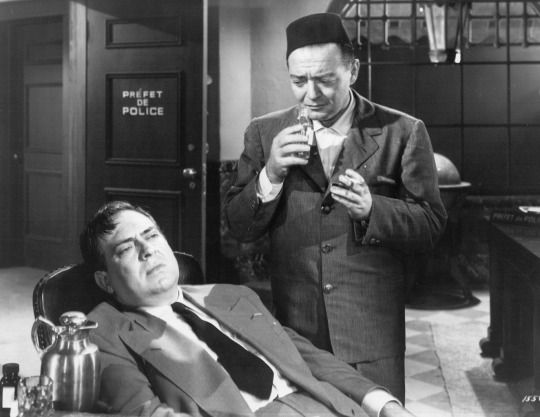
With Yvonne De Carlo as Inez:
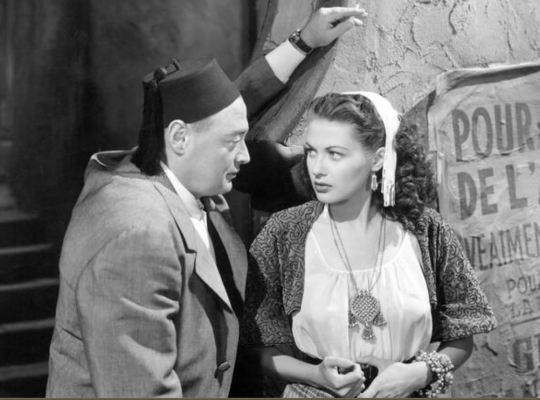

Joined by Märta Torén as Gaby:
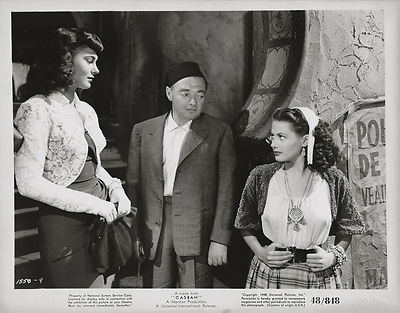
With Märta Torén again (and guh, those eyes of his):
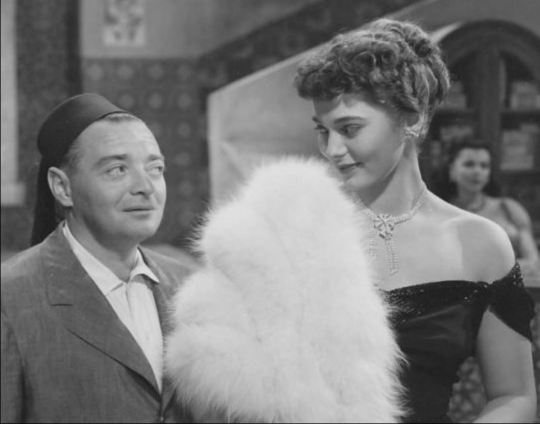

Alas, poor Pépé! (But oh, the beautiful brow of our Peter.)

From Ruth Waterbury’s review in the Los Angeles Examiner:
“Lorre as the Inspector who knows he is going to get his man Pepe is utterly wonderful. He’s lazy. He’s catlike. And smart out of this world. Lorre is so consistently good in every picture that they will probably forget his work in ‘Casbah’ when next year’s Academy nominations for ‘best supporting performance’ come around. But I hope they don’t. This smooth job belongs right up among the best.” -From "The Lost One: A Life of Peter Lorre" by Stephen D. Youngkin




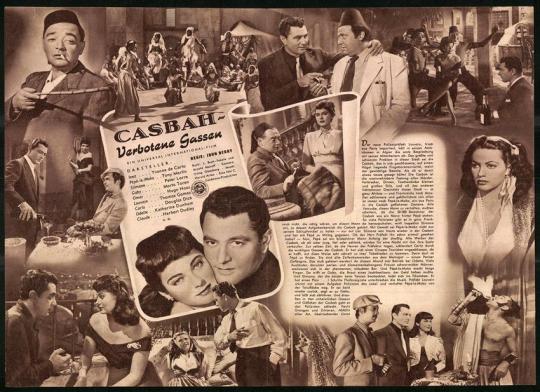
Want to see it?
youtube
12 notes
·
View notes
Text
Poil de Carotte (1925): a young boy's living hell
Julien Duvivier, the great French director of films including 1937’s Pépé Le Moko, was very clear which was his favourite out of his many beautiful silent films. “Poil de Carotte: without hesitation,” he said. “Of all the films I have made, this is closest to my heart.” Made, and remade. Duvivier directed this silent Poil de Carotte in 1925, and then remade it as a sound film in 1932. He later…
1 note
·
View note
Text
Le Clan des Siciliens
Un des films les plus surfaits eu'qu'j aie jamais vus, avec un Gabin à tics comme d'habitude, enfin sauf la 1e période bien plus subtile, comme Pépé le Moko, dans lequel ce n'est pas le pédo-sat de Douchy qui meurt mais le Moko, pas dans un terrain vague mais sur un port.
J'ai déjà écrit sur ce Verneuil (Achod Malakian, avec son vrai nom il n'aurait pas, dans une France rétive au "métèque", fait une telle carrière) médiocre mais encensé, si loin de l'"iconique" Peur sur la Ville et son humour grinçant. Dans ce film aux gimmicks morriconiens parmi les plus débiles de l'Histoire des BO, Melville n'arrive même pas à mettre en valeur le quartier du Canal St-Martin popularisé par Carné dans Hôtel du Nord.
Cette scène finale de qualité ne reflète pas la relative médiocrité de ce film de casse, très loin du niveau du Cerveau de Gérard Oury, avec...Belmondo. Il est intéressant de comparer via le schème "terrain vague" ce Clan des Siciliens au titre alléchant et à la réalisation ennuyeuse avec le chef d'oeuvre sordide de Corneau Série Noire, qui fit découvrir Marie Trintignant, carrière brisée par des phalanges aux noirs désirs.
Basile Pesso, Land of Somewhere, 22 août 2 024 (Fb) Avec la scène de fin Extrait de la BO, Enio Morricone
P.S : les photos reviendront ici et sur mon Tumblr 1, je l'espère, bientôt. Les aléas disons, techniques.
0 notes
Text
[la collection] JULIEN DUVIVIER
Julien Duvivier, né le 8 octobre 1896 à Lille et décédé le 29 octobre 1967 à Paris, a signé quelques-uns des plus grands films du cinéma français des années 1930 à 1960. Du cinéma muet (Poil de Carotte, Le Mystère de la Tour Eiffel), aux années 1930 (Maria Chapdelaine, La Belle équipe, Pépé le Moko, La Bandera), en passant par l’après-guerre et les années 1950, dont la série des Don Camillo avec…
0 notes
Text
The Thematic and Visual Elements of La Belle et la Bête and Pépé Le Moko
By: Julia Kusmenko
As World War II impacted Europe in the early 1900s, cinema during this time reflects the effects of German occupation and artistic styles that were influenced throughout these years. In France for example, the 1946 film La Belle et la Bête reflects the impact World War II had on storytelling and 1937 film Pépé Le Moko displays the dark mood felt during the years leading up to the war.
Regarding La Belle et la Bête, the influence World War II had on storytelling is expressed by the text from Lincoln Kirstein which reads as follows: “The French are famously frank. Four years of individual hell have sharpened their irony and released their creative energies. Their attitude towards the films at the present is wonderfully fresh, interested, responsible and honest��� (Kirstein 20). As a result, the stories told were fresh since the French no longer were oppressed by German regulations in 1946. With La Belle et la Bête, this film embodies this new and creative storytelling in France as the plot incorporates fantastical house furniture that comes to life, over-the-top costumes and a living man-beast. From this, German Occupation was not able to stop the creative energies of the French, rather, it encouraged the French to express themselves creativity after years of suppression.
Regarding Pépé Le Moko, this film is about a man who is notorious for stealing among the Casbah in Algiers and avoids being caught by police. What is interesting about this film is that it presents dark tones to the audience through the mise en scène by the lighting and dramatic camera angles. The themes of this film are also dark as the main character Pépé is depressed and expresses his dissatisfaction with life by drinking and taking out his frustrations on others. Pépé’s sadness can be seen by the image of him staring off into the distance behind bars moments before committing suicide as he watches the life he could have had slip away in front of his eyes.
A quote from the reading that illustrates this dark mood in Pépé Le Moko says “the mood found in the best of these films––a mood created from the emphasis accorded certain kinds of behavior and especially from formal factors such as lighting, camera angles, iconography, mise-en-scene––may ultimately be closer than a diegetic analysis to what was really felt, and thought, during those dark years” (Greene 440). In other words, the darkness of the mood in Pépé Le Moko that is expressed through the mise en scène and visual elements of the film relates to the uncomfortable feeling experienced by French citizens leading up to World War II.
With this, “This mood appears to me important enough to constitute not only the originality and unity of many films of this era but also a recognizable style” (Greene 440). In other words, the mood present in Pépé Le Moko is indicative of a certain style that was common in films during the time period. From this, films such as Pépé Le Moko are a product of the social environment as the political climate they are produced in may influence the story’s tone and mood.
Image from Pépé Le Moko:
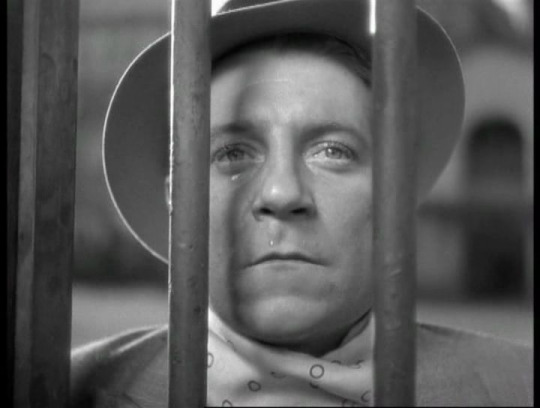
Works Cited
Greene, Naomi. “Mood and Ideology in the Cinema of Vichy France.” The French Review, vol. 59, no. 3, 1986, pp. 437–45. JSTOR, http://www.jstor.org/stable/392672. Accessed 1 Nov. 2023.
Kirstein, Lincoln. “French Films during the Occupation.” The Bulletin of the Museum of Modern Art, vol. 12, no. 3, 1945, pp. 16–20. JSTOR, https://doi.org/10.2307/4058089. Accessed 1 Nov. 2023.
0 notes
Text
2022 in 12 movies (1 per months)
January
The Pink Panther (1963) directed by Blake Edwards with Peter Sellers, David Niven, Robert Wagner, Capucine and Claudia Cardinale

February
Pépé le Moko (1937) directed by Julien Duvivier with Jean Gabin, Line Noro and Mireille Balin
[First time]

March
Mado (1976) directed by Claude Sautet with Michel Piccoli, Ottavia Piccolo, Jacques Dutronc, Charles Denner and Romy Schneider
[First time]
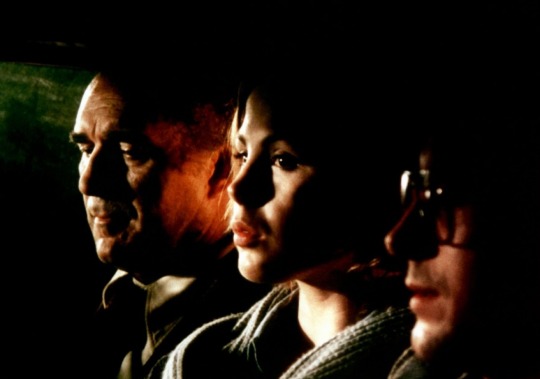
April
A Countess from Hong Kong (1967) directed by Charlie Chaplin with Marlon Brando, Sophia Loren, Tippi Hedren, Margaret Rutherford, Sydney Chaplin and Géraldine Chaplin
[First time]

May
Whiplash (2014) directed by Damien Chazelle with Miles Teller, J. K. Simmons, Paul Reiser et Melissa Benoist
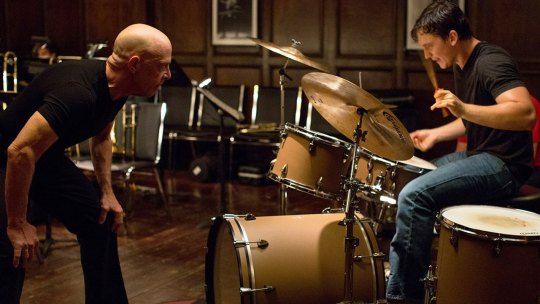
June
L'Arme à gauche (1965) directed by Claude Sautet with Lino Ventura, Sylva Koscina, Leo Gordon and Alberto de Mendoza
[First time]

July
Compartiment tueurs (1965) directed by Costa-Gavras with Yves Montand, Jacques Perrin, Catherine Allégret, Pierre Mondy and Claude Mann
[First time]
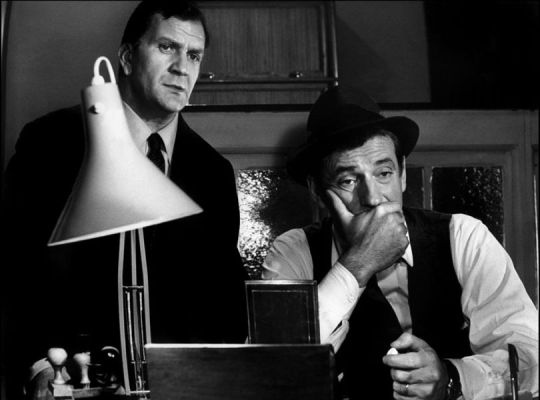
August
Soylent Green (1973) directed by Richard Fleischer with Charlton Heston, Leigh Taylor-Young, Edward G. Robinson and Chuck Connors
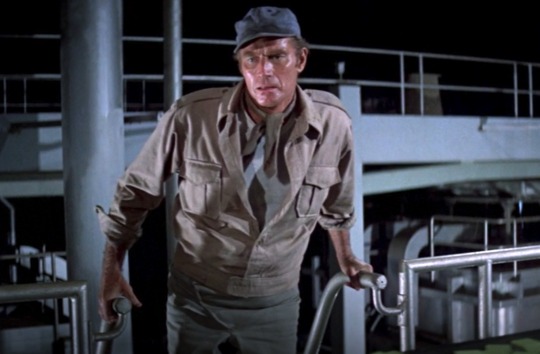
September
Estambul 65 (1965) directed by Antonio Isasi-Isasmendi with Horst Buchholz, Sylva Koscina, Mario Adorf, Perrette Pradier and Klaus Kinski
[First time]
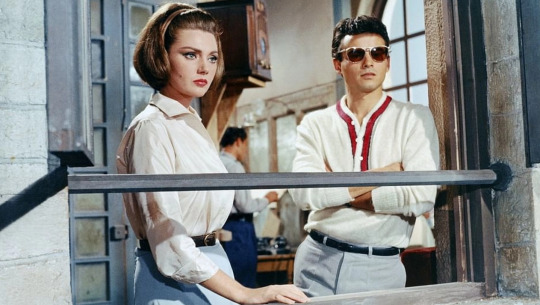
October
Nuovo Cinema Paradiso (1988) directed by Giuseppe Tornatore with Philippe Noiret, Salvatore Cascio, Marco Leonardi and Jacques Perrin
[First time]

November
Robin and Marian (1976) directed by Richard Lester with Sean Connery, Audrey Hepburn, Robert Shaw and Richard Harris
[First time]

December
Rebecca (1940) directed by Alfred Hitchcock with Laurence Olivier, Joan Fontaine, George Sanders and Judith Anderson
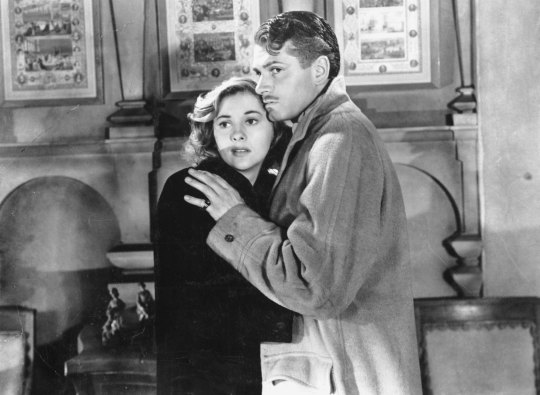
Honourable Mentions :
Guess Who's Coming to Dinner (1967)
In the Heat of the Night (1967)
An Affair to Remember (1957)
Le Sauvage (1975)
The Night of the Generals (1967)
Crime et Châtiment (1956)
Un témoin dans la ville (1959)
Le Mans (1971)
Les Demoiselles de Rochefort (1967)
A Star Is Born (2018)
César et Rosalie (1972)
The Breakfast Club (1985)
C'est magnifique ! (2022)
The Blues Brothers (1980)
Under Capricorn (1949)
Tous à l'Ouest (2007)
Le Fantôme du Bengale (1996)
Ho ! (1968)
The Greatest Show on Earth (1952)
The Wrong Man (1956)
The Rope (1948)
Le Visiteur du Futur (2022)
Le Secret des Incas (1954)
Itinéraire d'un enfant gâté (1988)
Le Magnifique (1973)
La Femme d'à côté (1981)
The Hustler (1961)
The Big Sleep (1946)
Fantômas (1964)
#2022 films#my top 12#cinema#cinematography#the pink panther#pépé le moko#mado#a countess from hong kong#whiplash#l'arme à gauche#compartiment tueurs#soylent green#estambul 65#nuovo cinema paradiso#robin and marian#rebecca#films#movies of 2022#bye 2022
17 notes
·
View notes
Photo

adieu
(d’après Pépé le Moko de Julien Duvivier)
5 notes
·
View notes
Photo


Pépé le Moko (1937)
366 notes
·
View notes
Photo





Pepe le Moko (1937)
“Le Moko? The prince of the plunders! Fifteen convictions, 33 daylight robberies, two bank hold-ups and how about burglaries? We haven't enough fingers in this room on which to count them all! How could he not be admired?”
Director: Julien Duvivier
Cinematographer: Marc Fossard & Jules Kruger
13 notes
·
View notes
Text
Pépé le Moko (1937) Julien Duvivier

2 notes
·
View notes
Photo

Pépé le Moko (Julien Duvivier, 1937)
11 notes
·
View notes